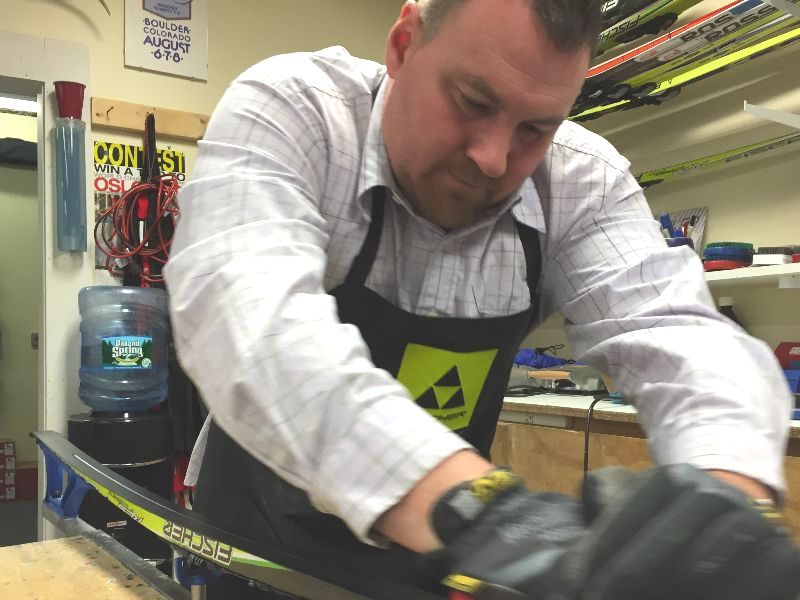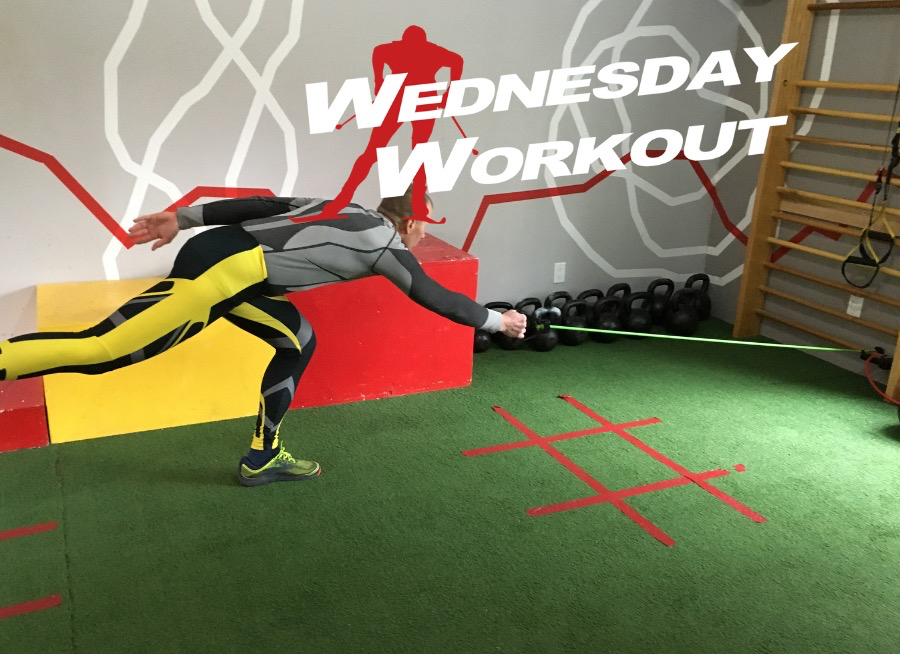
The following strength and performance tips come from one of our resident experts, Stuart Kremzner, MS, CSCS, FMSII, OS, RN, an exercise physiologist who has coached and raced in nordic skiing for over 20 years. Kremzner has trained/consulted with college athletic programs, elite teams, and athletes with the goal of improving athletic performance and injury prevention. When not working, he is running and skiing on the trails in New Hampshire or writing wax tips for the TOKO Tech Team. Kremzner can be found at e3sportsperformance.com.
***
In my recent article, “Back to Basics: How to ‘Reset’ for Nordic Performance”, I discussed how to prime our nervous system and core muscles in an optimized firing pattern. This article will delve into how to strengthen the core muscles now that they are more active and firing in an improved pattern. The goal of these exercises is to strengthen the core muscles in a reflexive dynamic pattern. The primary muscles targeted are the deep pelvic floor, transverse abdominal and gluteus medius muscles. Many other muscles are still very active as well.
Additionally, we learned how the reflexive core discussed in Original Strength is driven by three pillars: Vestibular stimulation, midline crossing or contralateral movement and diaphragmatic breathing. If what you are doing doesn’t satisfy these criteria then it is not reflex driven as far as the core is concerned, (Shropshire, 2018). The exercises below encompass these criteria.
When we read fitness books, articles or see YouTube videos about core training, it can be overwhelming and spark the questions– what do I need to do? What is most relevant for improving my Nordic skiing performance?
This is where having an assessment by a trainer certified in Original Strength or Functional Movement Systems will pay off in dividends, as the exercises will be targeted for you, versus a general starting point that is presented below. That said these are exercises that address the majority of deficits in a wide range of athletes from 10-year-old soccer players to skiers on the national team.
Consider the exercises below as a starting point, this is one of many potential good core exercise sets. Every athlete’s needs are different. If your reflexive core is already well developed then progress the exercises. Essentially, to keep developing and stimulating an adaptation you need to challenge yourself. Start with the basic exercises below. If you can do three sets of 10-12 repetitions with excellent technique then progress the exercise to a point where on your 8th-10th repetition your perfect body position, technique or muscles fail. This is the point of ideal adaptation for you.
Many of the exercises below are based on the Original Strength system of training. To learn more and really develop the knowledge to challenge yourself, I would recommend getting one of Original Strength’s books or check out more of their website videos.
Core Exercise Routine
Start with rolling out and doing some myofascial release. Then move into resetting and activating your nervous system with the Original Strength activation/warm-up discussed in last week’s article, this will prime your nervous system and accelerate your adaptation to the core exercises.
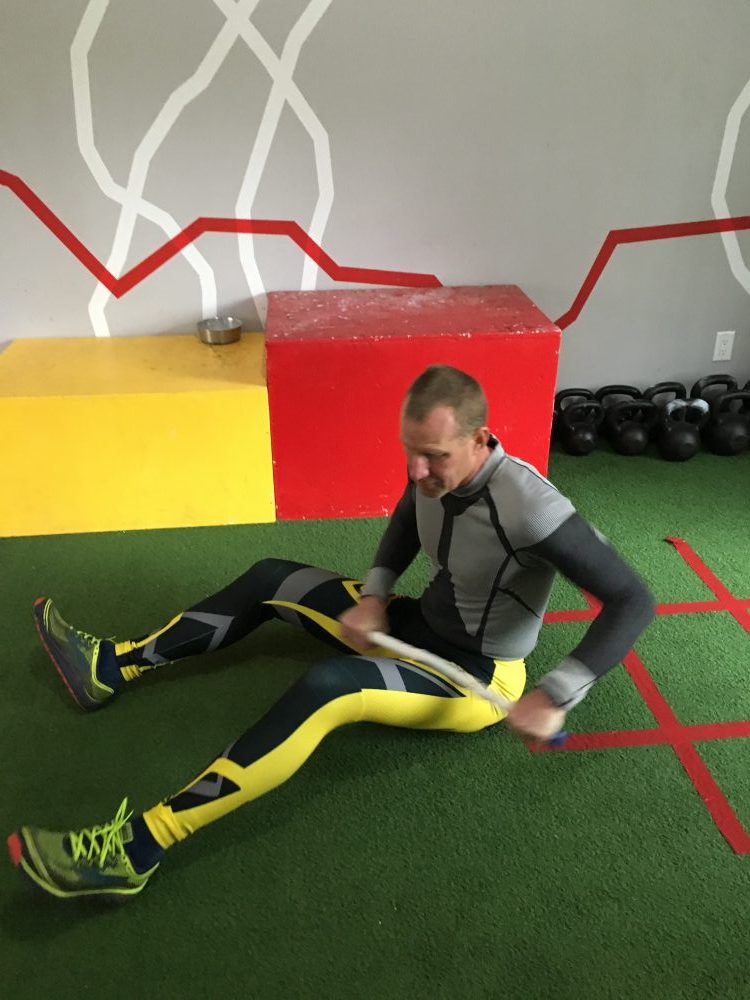
Important Points:
-These exercises can be done as an individual workout or added into an existing strength routine.
-For rapid adaptation, you should do these every day, or at a minimum 3 times a week.
-Maintain a good body position, continue to diaphragm breathe with good depth and rhythm.
-Execute the exercise with perfect technique. Remember 1-2 seconds with perfect technique is far more effective than compensated movement patterns (twisting, breaking position, holding your breath). This compensated movement will keep reinforcing a dysfunctional motor program and feeding into the same problem.
-As with the reset exercises described last week, continue to diaphragm breathe. Belly breathe deeply in and out through your nose. Your exhale should be 2x as long as your inhale. The tongue should be pressing on the roof of your mouth just behind your teeth. On the inhale push your belly button up as much as possible. The belly should always rise before shoulders.
-To advance these exercises, you can add load, (gravity or weight), pushing or pulling a load, create a less stable platform, or distraction (resistance pulling you in another direction, with a band or opposite limb movement).
For example to progress dead bugs, add a weight to the hand or ankle, or flip around and convert the exercise to a super dog. To progress super dog, put a dynadisk under the weight bearing hand or knee, then both. Then you can further progress the activity with knees off the ground about 1-2 cm.
The Workout
EXERCISES
Dead Bugs- Lay on your back. Starting position arms and legs extended, 90 degrees to the ground. Elevate head, extend leg and opposite arm position just above the ground but not touching, hold 5-10 seconds (or to fatigue), return to start position, repeat opposite side.
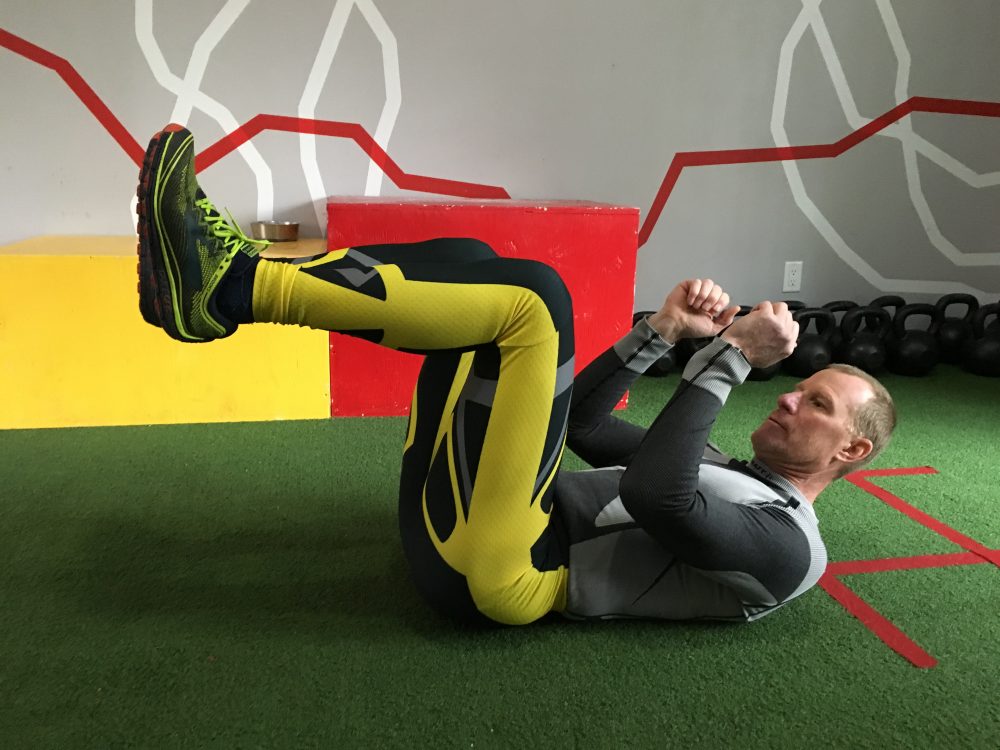

Bird Dogs/Speed Skaters– Begin on all fours, hands under shoulders, knees under hips, with a neutral spine. Brace your midsection and extend your opposite arm and leg. Hold for 2-10 seconds. Concentrate on contracting your glutes without extending your back. Keep your head up throughout the exercise. Repeat opposite side. To progress, add load, or try the quadraped lift off with hip extension as presented in Gus Kaeding’s 8/31 Wednesday workout article.

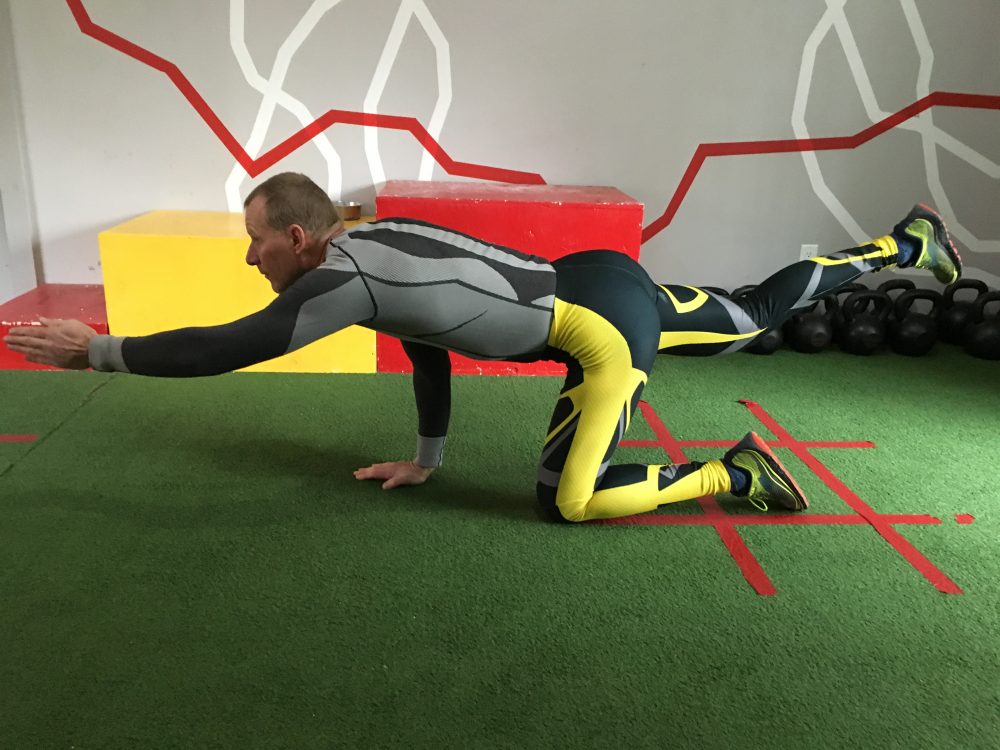
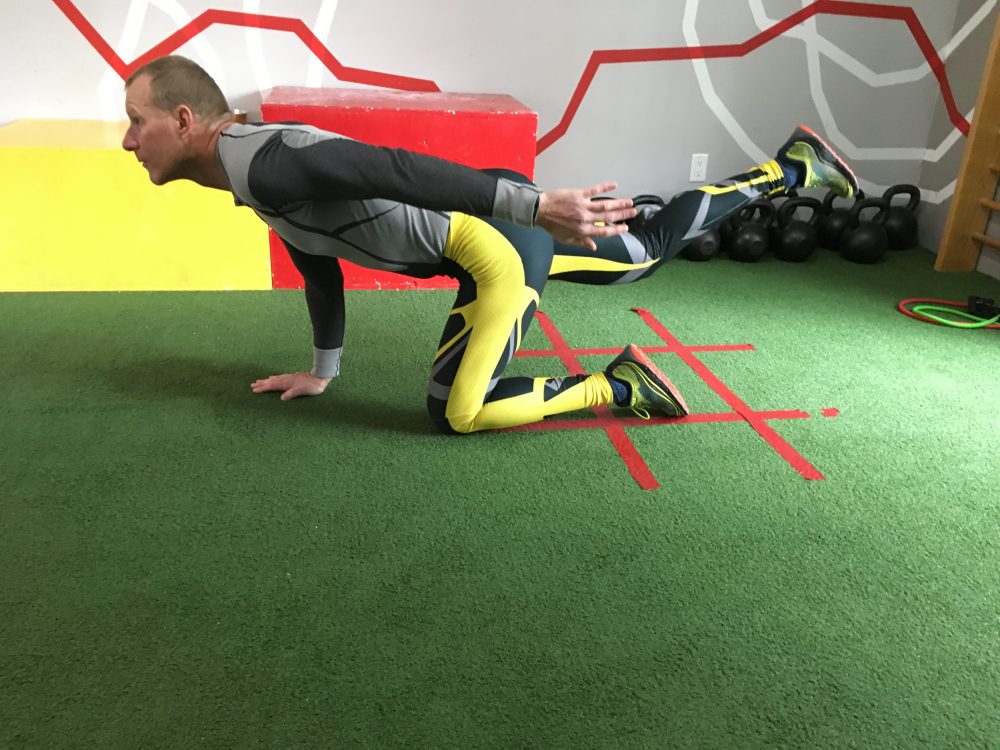
Incline Dynamic Plank- Start with an elevation of 24”-28”, have elbows on the box, and body extended with hips pressed forward, contract glutes to help with this. It is important to keep the torso, hips, and legs extended, and level with no twisting or compensation. Extend an arm and hold to fatigue for 2-10 seconds, then another arm, then each leg. Repeat 2-3 times. Remember, perfect body position is the key, twisting, or pushing your butt back just to get 10 seconds does not achieve the goal of the exercise. You will just end up skiing with the same compensated pattern come snow time.

To progress exercises- increase time first to 10 seconds, then decrease incline to lower box, then lift arm and leg, increase the time to 10 seconds, and decrease incline to flat. Once flat, you can add load, distraction, or instability.
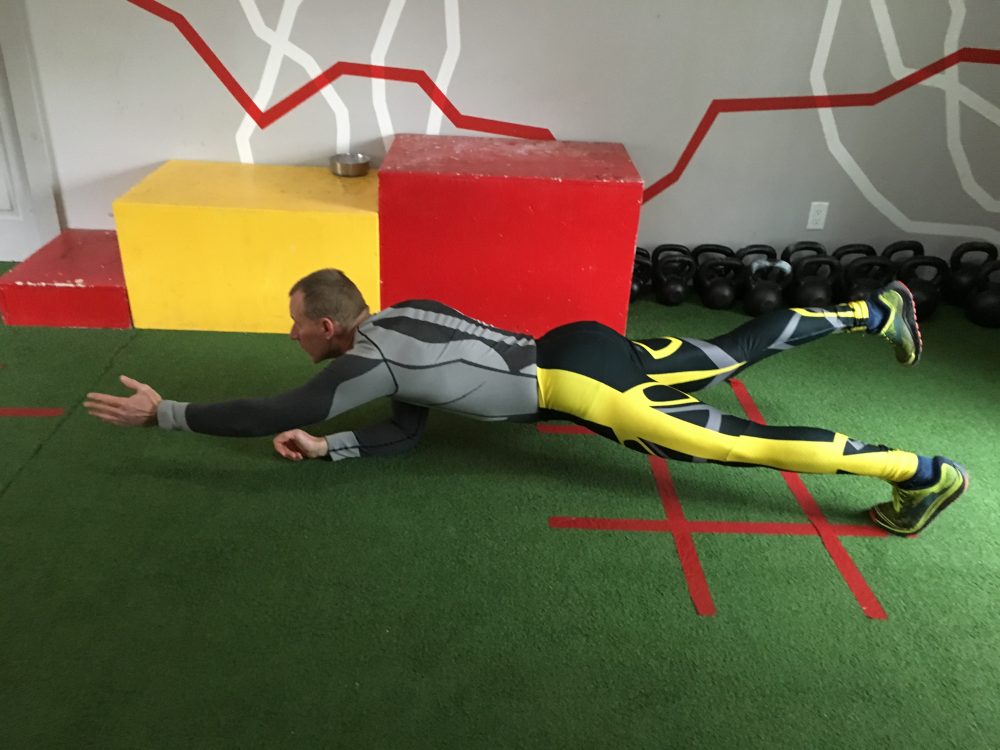
Baby and Elevated Forward and Lateral Crawls– These are baby crawls with more resistance. Focus on keeping a neutral spine and head up. To increase load, advance to Leopard Crawls by elevating knees 1-3 cm off the ground. Keep the same rhythm and technique as baby crawls.
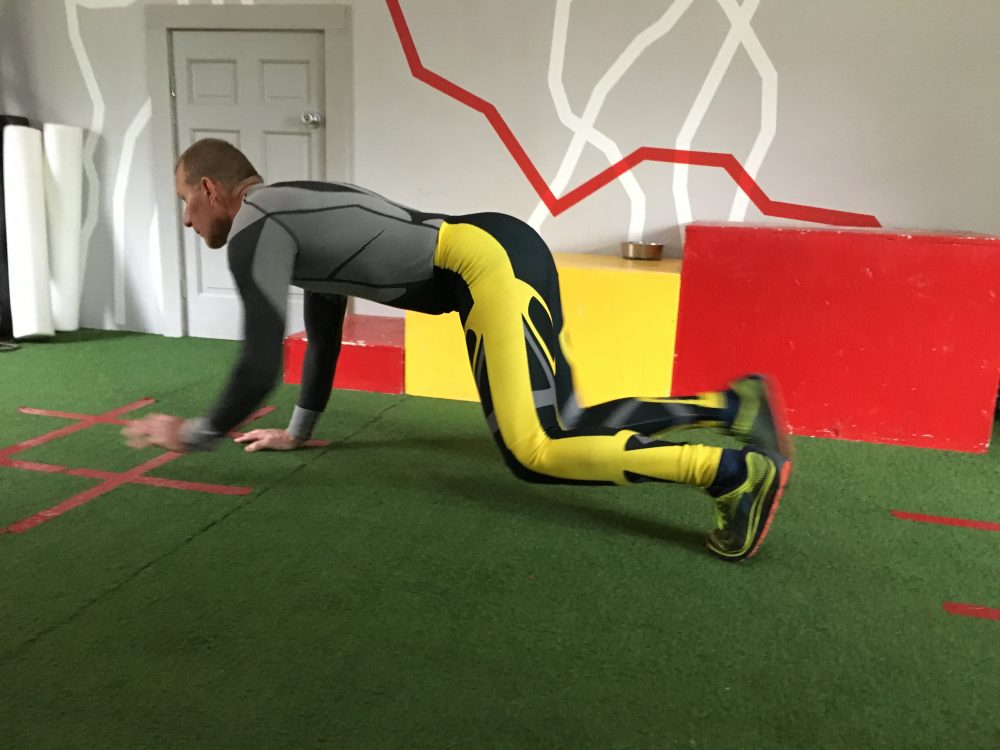
Static Single Leg Glute Bridge- Lay on your back, draw one heel up 6” from buttock, lift hips up with opposite leg extended. Hold 2-10 seconds. To advance exercise, cross arms across chest, use distraction or increased load on opposite leg.
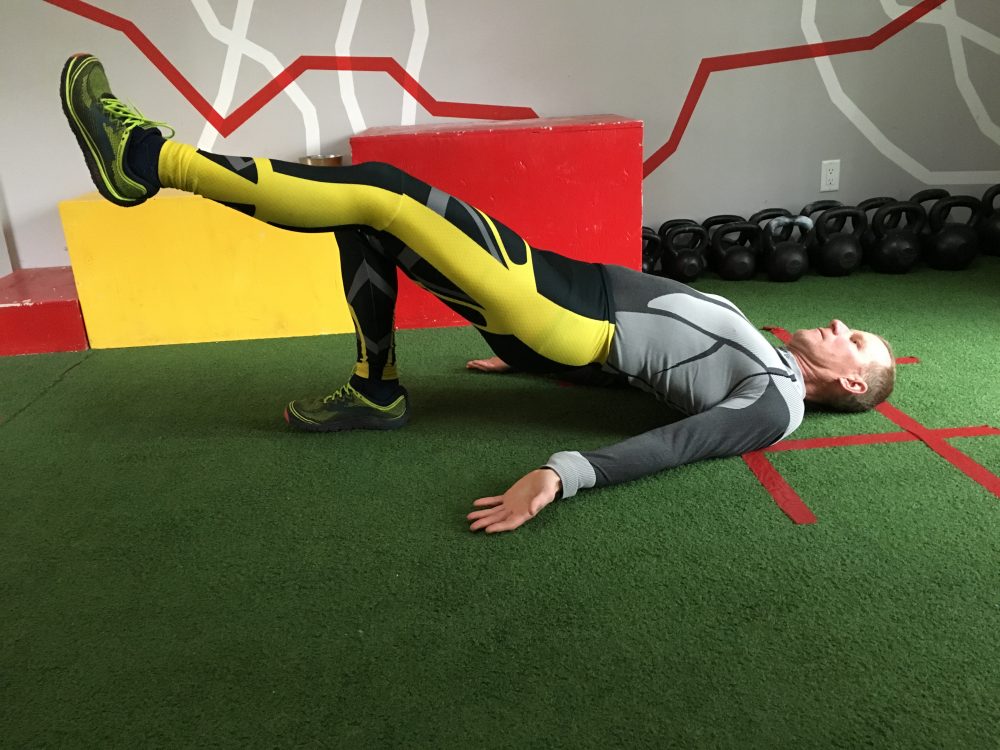
Glute Pulls– This exercise was developed by Mark Shropshire. This is a more advanced method of strengthening the glute-hamstring complex. Have a resistance band or chain with minimal initial load-but with some resistance-attached to a fixed sturdy object. Hold resistance band in right hand, and standing on right leg while extending down and forward, towards the ground, hinge at hips while bending knee, extend left leg, hold, then return upright while lifting the right knee and pulling back with the right arm. Switch sides, repeat.
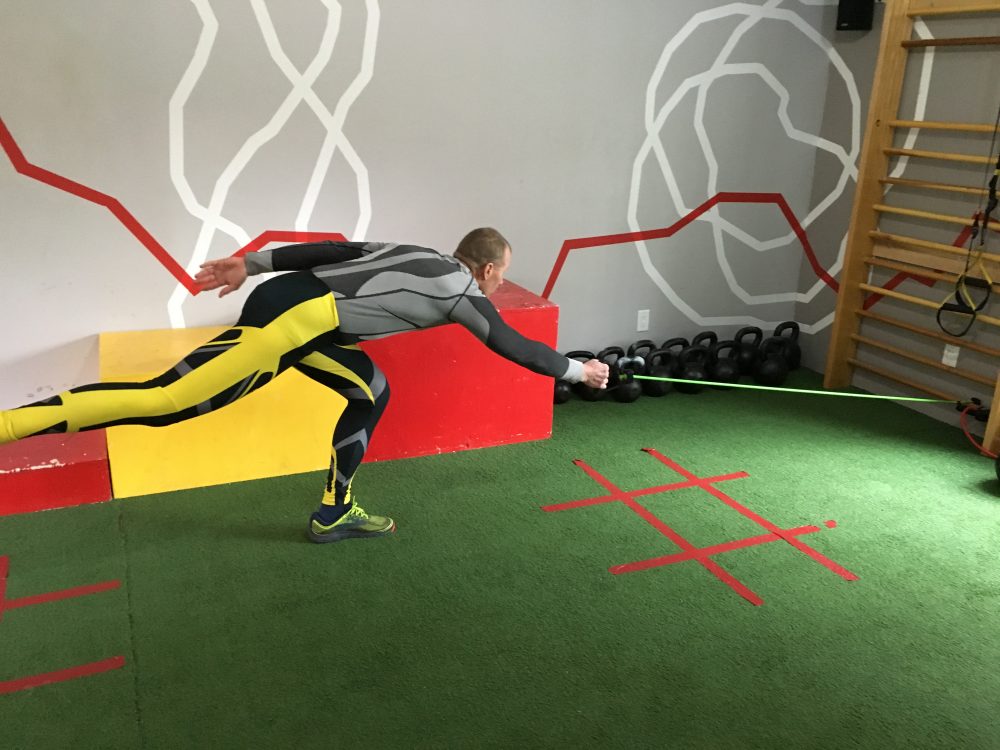
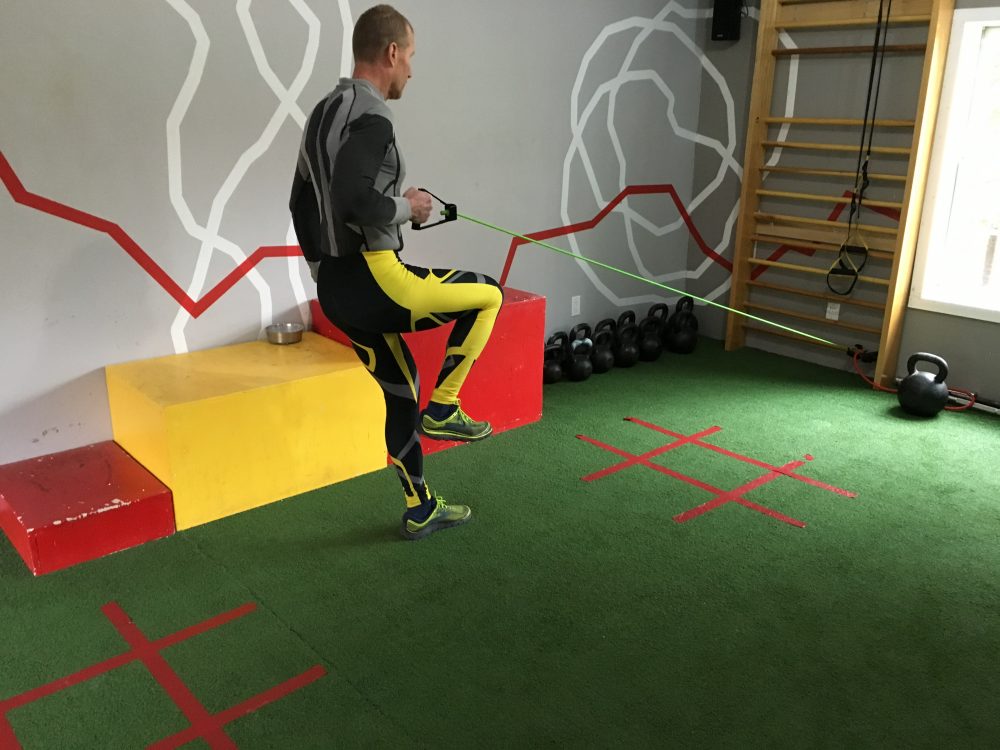
- Baby and Elevated Forward and Lateral Crawls
- Bird Dogs
- contralateral movement
- core
- Core Exercise Routine
- core strength
- Core workouts
- Dead Bugs
- Diaphragmatic breathing
- e3sportsperformance.com.
- gluteus medius muscles
- Incline Dynamic Plank-
- midline crossing
- myofascial release
- Original Strength or Functional Movement Systems
- Speed Skaters
- Stuart Kremzner
- transverse abdominal
- Vestibular stimulation
- Wednesday Workout
Jason Albert
Jason lives in Bend, Ore., and can often be seen chasing his two boys around town. He’s a self-proclaimed audio geek. That all started back in the early 1990s when he convinced a naive public radio editor he should report a story from Alaska’s, Ruth Gorge. Now, Jason’s common companion is his field-recording gear.



